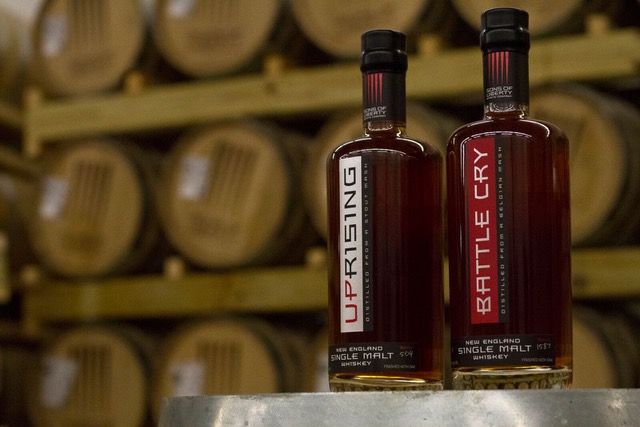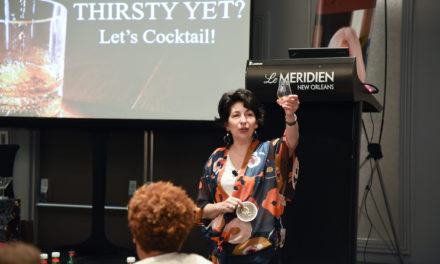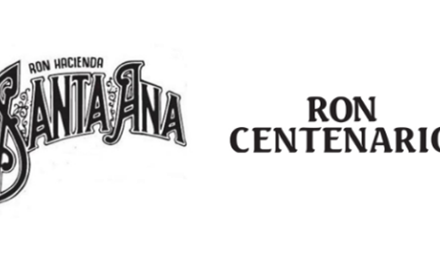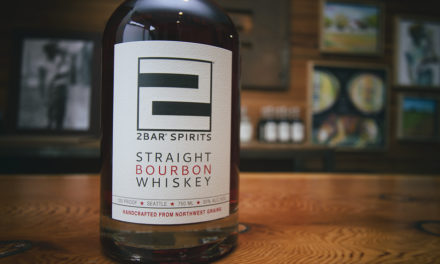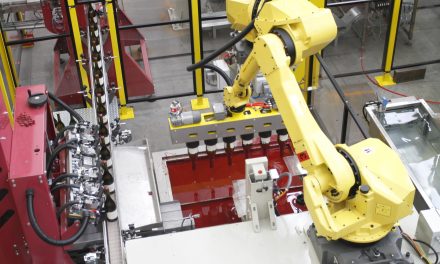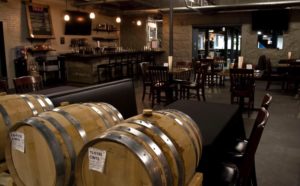
Whiskey is, essentially, beer with a graduate degree.
Consumers new to whiskey often experience a “wait… what?” moment when someone tells them whiskey is made from beer. While this is true only in the broadest sense—the low-alcohol wash created from malted barley, other grains, and yeast for distilling is typically lacking in hops, which makes beer so palatable—the process of making wash from wort closely aligns. Whiskey is, essentially, beer with a graduate degree.
Mike Reppucci, who founded Rhode Island-based Sons of Liberty Spirits Company in 2009, has been working to educate drinkers about the close kinship of beer and whiskey. He’s lately rejiggered his business model to make the connection not only transparent, but more entertaining and educational. While a number of breweries have expanded by adding distilleries, Sons of Liberty is the only craft distillery I know of that later added a brewery (in fall 2016).
Reppucci is currently producing two mash bills: a stout and a Belgian tripel wheat beer. Each of those is available as a beer or distilled into white spirits. He also ages his spirit in fresh oak, uses those barrels to condition beer, them empties the beer and uses the casks once again to further age spirits. As a result, he gets five products from each mash bill: a beer, a white spirit, an aged spirit, a beer that’s cask-conditioned in spirit barrels, and a spirit aged in ex-beer barrels.
That brewers and distillers have a natural and symbiotic relationship is a message brewing and distilling pioneer Bill Owens has regularly given to those seeking to start up a whiskey distillery. (Owens straddled both worlds: He opened a craft brewery in 1983, and founded American Distilling Institute in 2003.) Combining production is a way to share expense and expertise. “The future is to build a brewery that doubles as a distillery,” Owens told Imbibe magazine in 2011. “One day you’re kegging beer, and the next you’re brewing wash for whiskey.”
Among the earliest to build a bridge was Anchor Steam beer, a legacy brewery in San Francisco, Calif., that was reborn as America’s first craft brewery when Fritz Maytag took it over in 1971. In 1993 Maytag launched Anchor Distilling as an offshoot, initially using the company’s expertise in mashing grain to create its rye whiskey.
“Brewstilleries” (as some have unfortunately called them) have been cropping up ever since. The American Distilling Institute currently has 21 brewery/distilleries in its database, although the actual number is surely higher.
Such places range from the small, such as Liquid Riot in Portland, Maine, which has a brewery and distillery separated from each other—and the adjacent bar and restaurant—by walls of glass. At the other end is Dogfish Head in Delaware, which carved out a mid-sized distillery in a portion of its massive brewing operation and uses the same ingredients to make spirits as it does beer.
Some obstacles arise when producing both beer and whiskey. Arcane legalities mean separate spaces and books need to be maintained for each facility, even if it’s all under one roof. That means being mindful of regs when moving wash from brewery to distillery. Reppucci says his distillery is essentially “landlocked” within his brewery, so when moving spirits through the brewery and out the door, they need to erect a temporary fence and decree that part of the brewery as a distillery for the few minutes the goods are in transit.
Other breweries that have added distilleries quickly learned they essentially needed to start over when marketing spirits. Even if a brewer is well known regionally, that renown often doesn’t translate to spirits; plus, depending on how beer and liquor sales are structured in their state, a move into spirits can require cultivating a new set of retailers. They also need to build new networks as they move from working with tap jockeys to craft bartenders.
Despite the bumps in the road, Reppucci says he’s happy with his beer-to-spirit model, as it helps bring in potential consumers across beverages. “They try our spirit-finished beer, and then they want to try the whiskey,” he says. “So we’re getting the beer guys interested in spirits.”
Sons of Liberty has lately been experimenting with a genever made from its Belgian wheat beer. “It’s not quite there yet,” Reppucci admits, but it has promise. He’s also made a whiskey from a saison made with pink peppercorn, lemon peel, and two kinds of hops. It was a success, but the TTB required them to label it as a “distilled spirits specialty” rather than whiskey, which makes it more difficult to market.
Still, people are talking. “Now I hear people fighting over whether the peat-smoked barrel finish is best,” he says. Bottom line: “They’re talking about us.”
Which is what every distiller wants to hear.

